The unequal distribution of the gains of Fairtrade (FT) derives in a large part from the characteristics of certification. The certification system presents a twofold bias against the poorest developing countries. First, there are considerations related to the costs of certification. These being the same everywhere, they are relatively more expensive for the most disadvantaged countries, all other things being equal. Then, due to its sliding-scale price structure, certification is less costly for large producer organisations than for smaller ones. Finally, the cost of compliance with FT standards (changes in agricultural and administrative practices that often lead to an increase in working hours) is higher for small organisations due to their lower productivity and lower economies of scale.
FT-certified articles tend to be based on products usually exported by Latin American countries. Coffee represents 36% of certification demand. Tea (9.3%), fresh fruit and vegetables (9.1%) and bananas (8%) complete the list of top certified products in 2009. One out of two FT-certified products is either coffee, bananas or cocoa. In terms of export revenue, coffee is also the most sold FT product, at 47%, followed by bananas at 18.8%. Coffee and bananas account for two-thirds of export revenue generated by FT. Yet, Latin America accounts for 263 out of the 317 coffee certifications granted in 2009 (or 83% of certifications) and 70 out of the 71 banana certifications.
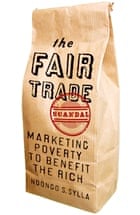
Latin America enjoys a double benefit compared with Africa and Asia, namely that certification is less costly in its case and FT markets are dominated by its main exports. The result of this bias is that Latin America accounts for 56% of effective certification demand against 29% for Africa, 14% for Asia and 1% for Oceania. Though Latin American countries are no doubt among the most unequal in the world, they are certainly not among the poorest. Mexico is the first country where FT was tried out. Yet this OECD member state accounts for nearly a quarter of the GDP of Latin America and the Caribbean. Its GDP is actually higher than that of the whole of sub-Saharan Africa. Seen from this angle, it would seem that the FT system was biased right from the start.
FT no doubt helps poor and vulnerable producers, but it certainly is not at the service of the poorest. Effective certification demand is positively correlated to country income. Countries ranked by the World Bank as upper middle-income account for 54% of producer organisations having received FT certification against 21% in the case of low-income countries. As for least developed countries (LDCs), they only account for 13.5% of effective certification demand. Whatever definition of poverty and economic vulnerability is used, the conclusion is the same: FT tends to exclude the poorest countries.
Some argue that in rich countries such as Mexico, there are huge social and economic inequalities as a result of which some populations find themselves in a situation of extreme poverty. This is undeniable, but not convincing. First, this argument does not explain why within these inegalitarian countries, the least poor groups are generally selected by FT. Then, the criterion used to justify which nations deserve to enter the FT system is contradictory. France, for example, is a very rich country. Yet it has many poor workers and farmers. So why not promote FT in France, as some have argued, or in the US or UK? FT protagonists will argue that these countries can tackle their own problems, as they have the means to do so. But this is also the case of Mexico and of the richest developing countries. Better still, differences in income between France and Mexico are much less pronounced than between Mexico and LDCs. If we choose to favour Mexico over France based on the need criterion, the same logic should mean favouring the poorest countries at the expense of wealthier developing countries.
Some countries are highly dependent upon the export of a limited number of primary products. The slightest price variation can have a significant impact on their economies. Within the FT system, dependent countries are underrepresented, whereas those countries with the most diversified exports are overrepresented.
Let us take the case of coffee, a product with a major distributive advantage, as it is mostly produced by small producer organisations. Ethiopia and Burundi are among the countries most dependent on coffee. Coffee accounts for 34% and 26% of their export revenue, respectively. For both these countries, only three FT coffee certifications were issued in 2009. In contrast, Mexico and Peru received 42 and 57 certifications, respectively, which represents nearly 31% of the effective certification demand for coffee. Yet these two economies are relatively diversified and, at any rate, coffee exports account for less than 2% of their export revenue.
In Latin America, Honduras and Nicaragua are two countries relying greatly on coffee. In relative terms, their dependency on coffee is at least 10 times higher than that of Mexico and Peru. But their share of certification demand is lower. FT bananas, cocoa and cotton follow a similar narrative. The countries most dependent on these products are underrepresented in the FT system. Among flagship products, only FT tea seems to be an exception. Yet, one of its specificities (as for bananas, flowers and plants, fruit and vegetables) is that it is produced primarily by male and female wage workers in plantations.
This exclusion of LDCs and other vulnerable developing countries is not the result of a deliberate choice by FT labelling initiatives. Indeed, the movement especially seeks to help those that already are on its "path", in other words, producer organisations showing a development potential and organisational predispositions.
The path taken by FT is much too narrow for poor countries to tread. FT chose to specialise in the trade of agricultural products. It is true that LDCs are generally countries where the labour force is primarily employed in agriculture. The problem is, however, that LDCs are often dependent to a greater extent on the export of non-agricultural primary products. UN trade body Unctad only ranks 11 out of a total of 49 countries as exporters of agricultural products (over half of export revenue). To make matters more complex, most LDCs are net importers of food products. With the exception of three countries, all LDCs are part of the FT category defined by the UN's Food and Agriculture Organisation as low-income food-deficit countries.
Therefore, FT tends to mostly benefit Latin American countries because this region is a net exporter of agricultural products. Argentina, for instance, draws half of its export revenue from agricultural products. To put things differently, agriculture in Latin America is mostly focused on exports, whereas for African and Asian LDCs, agriculture serves a subsistence purpose.
In a sense, the "mistake" made by founders of FT and of the movement that they helped to establish was to believe that what applied to the Latin American context could also work in other developing regions. If FT had been born in the African context, it would probably have had a greater focus on mining or petroleum products. Likewise, if it had been inspired in Asia, it would probably have been more specialised in the trade of textile products and clothing.
It seems in reality that international trade is all about "clubs": all other things being equal, the rich trade more with other rich than with the poor. This is justified by their different levels of development. Evidence of this is that, outside of all plutocratic logic, it is difficult to identify a consistent pattern to the expansion of FT certification in some areas of the globe. In sub-Saharan Africa, the country with the richest economy (in GDP terms), South Africa, tops FT certification demand with 54 out of a total of 260 in 2009. Its two major FT products are fresh fruit and vegetables, and wine grapes, products that are not part of the country's top 10 exports. In Asia, India accounted for 56 of the 124 FT certifications that were granted in 2009. Its two major FT products are cotton and tea.
In a nutshell, although low, the gains of FT for the most part go to Latin American countries. In its global operations, FT does not partake in a logic of international redistribution in favour of the poorest countries, or even of dependent countries. In reality, this movement seems to follow a plutocratic logic, in other words, one that serves the government of the rich.
What is striking is that the protagonists and supporters of FT still have not realised this. The funniest part is that these detractors of free trade are usually unaware that each cup of Max Havelaar coffee that is drunk in the world is a tribute paid to the glory of "Mr Market".
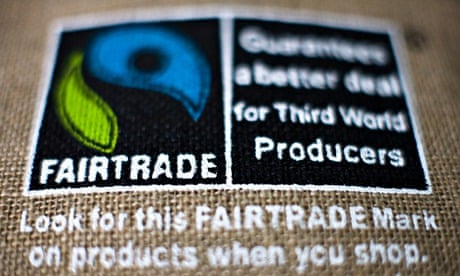

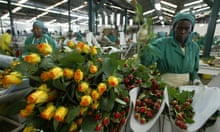
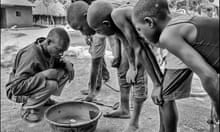
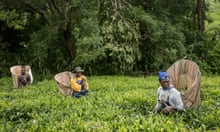

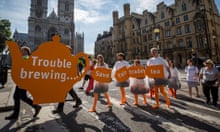




Comments (…)
Sign in or create your Guardian account to join the discussion